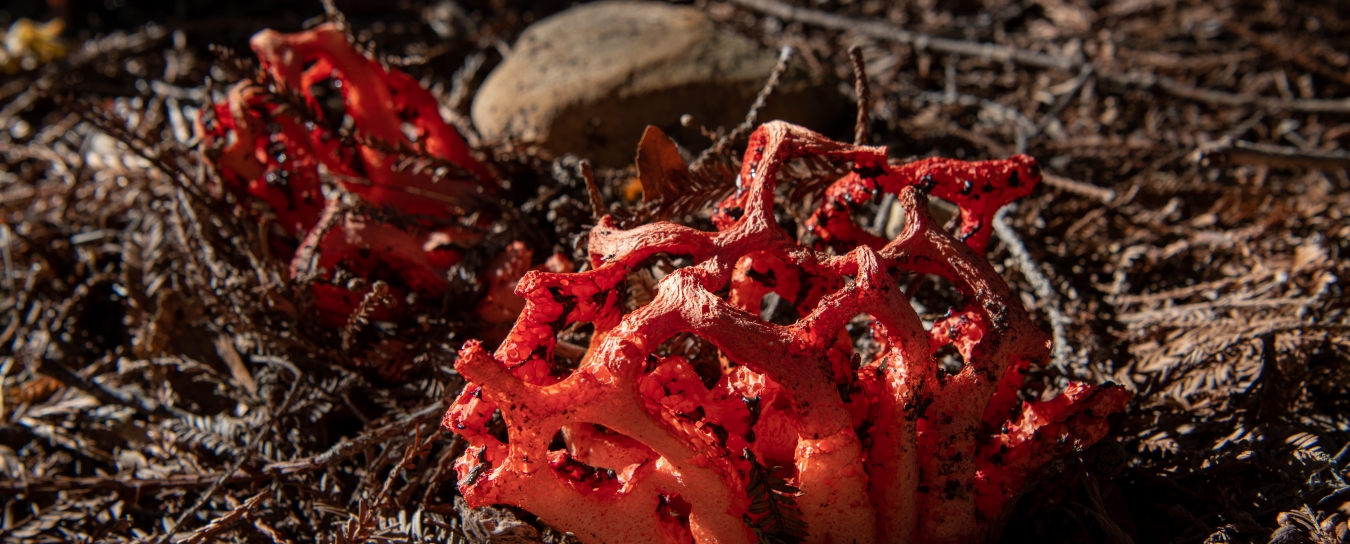
Fungi
Our fungi identifications are courtesy of fungi expert Bob Cummings, who teaches in the Botany Department at Santa Barbara City College in the Biological Sciences. Before you ask, check to see if your fungus has been identified below.
- Anthropology
- Rocks & Fossils
- Invertebrates
- Vertebrates
- Botany
- Astronomy
- Fungi
- General
- Recently Asked
Fungi id
Can someone identify this conk?
All 4 photos are from same conk on valley oak (Quercus lobata) near Pinnacles National Park.

Curator Response
Hi Robert,
Thanks for sending us your question. Whenever we have a question that requires a fungi expert, we ask Bob Cummings, who teaches in the Botany Department at Santa Barbara City College in the Biological Sciences. Here's his response:
"Mycologists are a frustrating lot. Ask them to identify a simple mushroom from a photograph and you may get a frustratingly convoluted taxonomic laundry list of possible names for an answer. Let me try to explain. This 'conk' or 'shelf fungus' would probably key out to Phellinus gilvus in most mushroom field guides. The first complication is that in newer field guides its name will appear (more accurately, according to the newest taxonomic studies) as Fuscoporia gilva.
More complications follow. Because there aren't a lot of useful morphological 'key characteristics' available with specimens such as this (nor in most fungal fruit bodies for that matter), taxonomists turn to molecular markers that are able to distinguish genera and species with a high degree of accuracy. I reached out to Noah Siegel (co-author of Mushrooms of the Redwood Coast, and mycologist with an encyclopedic knowledge of fungi) for help. With the photos (but lacking molecular data), Noah responded with a possible identification: Fomitiporia (?)fissuratus, a more sophisticated guess than my own, but still not a positive id. Further complications (in case anyone is still reading...): Most conks in the relatively newly created genus Fomitipora were once classified as species of the genus Phellinus. Aha, Noah and I probably concur, based on the fact that the genus Phellinus has been split into additional genera, such as Fuscoporia and Fomitiporia. In conclusion, the mushroom in question here could be called Phellinus gilvus, Fuscoporia gilva, or Fomitipora (?)fissuratus.
Taxonomically important molecular data is rapidly accumulating. Within the next few years taxonomists will be able to provide us with reliable, stable scientific names that will put an end to our dithering."


